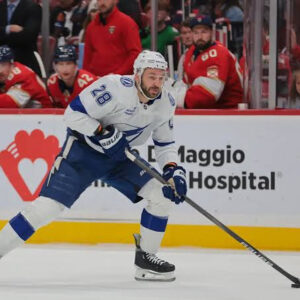Tampa Bay Soccer Hall of Fame Honors Inaugural “Starting XI” Class
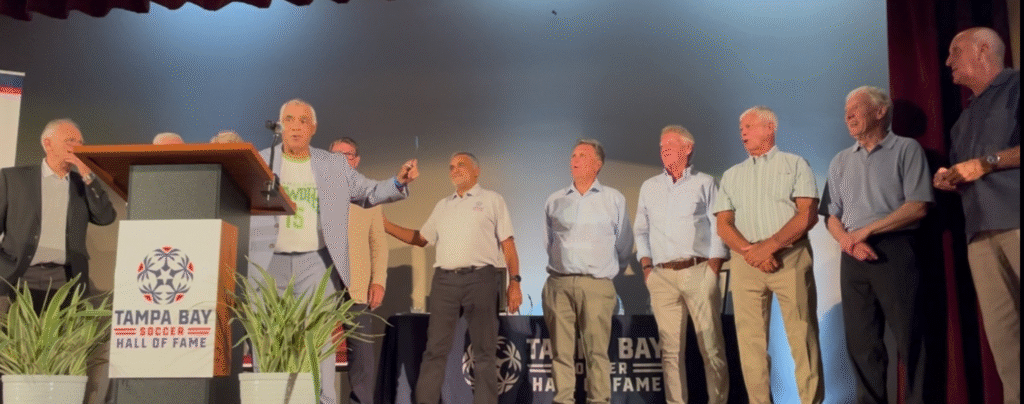
Soccer’s past and present came together in a way rarely seen at the inaugural Tampa Bay Soccer Hall of Fame dinner, as eleven figures who transformed a regional sport into a cultural phenomenon were honored for contributions spanning five decades of excellence.
The Hall’s creation represents milestone recognition, while also being the permanent home for celebrating the international stars, homegrown talents, dedicated coaches, and behind-the-scenes builders who make Tampa Bay one of American soccer’s most influential communities.
For one evening, generations gathered under one roof, with former Rowdies teammates embracing after decades apart, youth coaches reconnecting with players they once trained, and fans sharing memories of when soccer fever first swept through the Tampa Bay in the 1970s.
The evening included players who built the Rowdies’ legendary reputation, like Mike Connell, whose nickname “Iron Mike” became synonymous with durability. The South African defender anchored the Rowdies from 1975 to 1984 with remarkable consistency, setting an NASL-record 179 consecutive regular-season starts and accumulating 252 total appearances, third in league history. His two first-team All-Star selections and retired No. 6 jersey tell only part of the story.
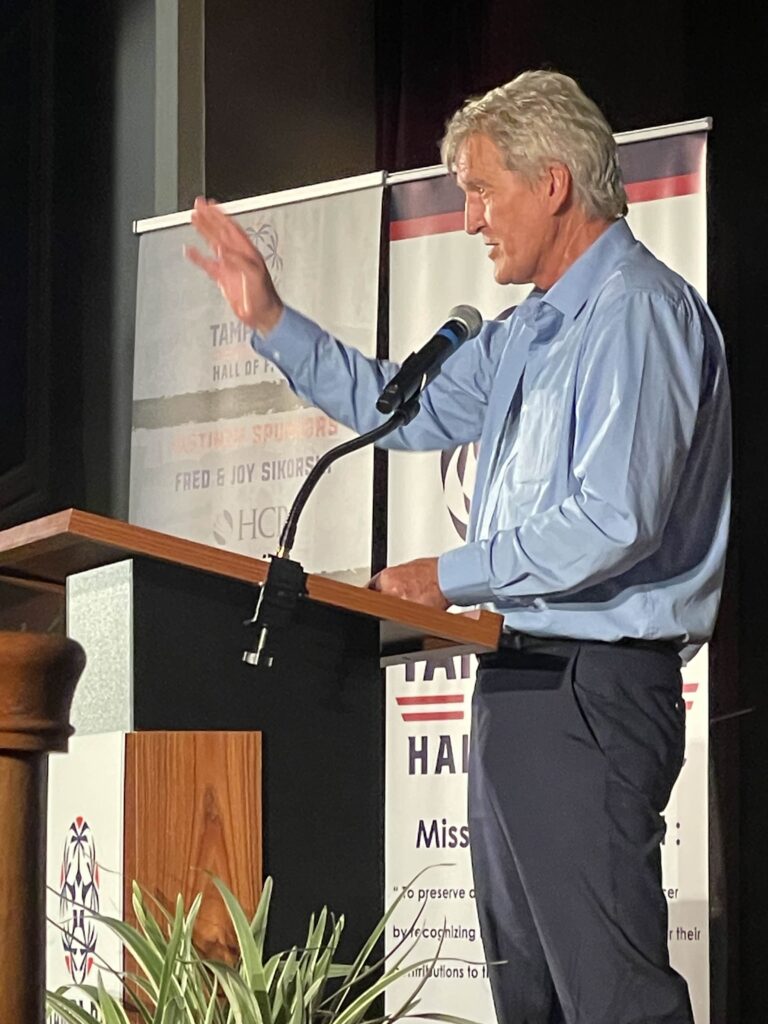
Derek Smethurst brought a different kind of consistency: the consistency of finding the back of the net. His deadly touch produced 57 goals in just 65 games between 1975-78, a record that stood for decades. The striker’s four-goal performance marked the first in Rowdies history, as he earned first-team NASL All-Star honors.
Steve Wegerle represented the creative brilliance that made the Rowdies special. During two stints with Tampa Bay, the winger’s vision and skill accumulated 88 career assists (fourth in NASL history) and helped propel the team to Soccer Bowl runner-up finishes in 1978 & 1979. Perhaps more remarkable is his post-playing dedication to youth development. Over nearly three decades, his teams captured multiple Florida State Cup titles, culminating in 1988 when his Carrollwood Lightning U14 squad won a national championship, then finished fourth at the U14 World Cup.

Behind every great team stands visionary leadership, and Eddie Firmani provided exactly that. The tactician brought an extraordinary international playing pedigree to his role as the Rowdies’ first head coach, immediately delivering results as the expansion team went 16-6 and captured the 1975 NASL Championship. Named 1976 NASL Coach of the Year, Firmani became one of just three coaches to win both indoor and outdoor NASL titles.
The foundation for that success was laid by George Strawbridge, who guided the Rowdies from their 1974 founding through 1983. Under his stewardship, Tampa Bay compiled a 145-116 record with one championship, two runner-up finishes, and seven postseason appearances.
Strawbridge’s vision extended beyond wins and losses: his successful campaign to establish the NASL’s first full indoor season in 1979 helped grow the sport’s fan base while his commitment to developing homegrown talent balanced the influx of international stars.
Francisco Marcos embodied that international influence while building American soccer’s infrastructure. After serving as Rowdies vice president from 1974-1985 overseeing public relations and player procurement, his true legacy emerged in 1986 with the founding of the Tampa-based United Soccer League. The USL grew to become America’s largest professional soccer organization, a contribution formally recognized in 2024 with Marcos’s induction into the National Soccer Hall of Fame.
The Hall’s collegiate representatives proved that Tampa Bay’s soccer excellence extended beyond professional ranks. Jay Miller transformed the University of Tampa into a national powerhouse, producing a 120-39-8 record across nine seasons, six conference championships, and the program’s first national title in 1981. His success continued at the University of South Florida with four conference championships in six years. Miller’s influence reached the national level as National Coaching Coordinator for the United States Soccer Federation, helping develop coaching standards nationwide.
Jim Di Nobile made history as a goalkeeper at Eckerd College, setting an NCAA record with a 108-yard goal that still stands today. As assistant and later head coach at Eckerd, he earned Sunshine State Conference Coach of the Year honors four times. His goalkeeper expertise led to roles as National Team Goalkeeper Coach for the United States Soccer Federation and throughout the regional soccer community.
Vicky King has anchored girls soccer at Land O’Lakes High School since the program’s 1986 inception, compiling a 591-235-68 record that includes a Class 2A state championship in 2003, eight Final Four appearances, and 17 district championships. Her excellence earned recognition in the Tampa Bay Times’ “50 for the Ages: The Top Coaches in Tampa Bay History” in 2018, while her dedication to Special Olympics athletes demonstrates soccer’s inclusive power.
Mike Mekelburg transformed from USF midfielder into one of the region’s most influential officials. Beginning as a grassroots referee in 1990, he earned his National Assignor license and served as Regional Assessor with the Florida Soccer Referee Committee. His mentorship has guided more than a dozen officials to FIFA certification, raising officiating standards throughout Florida.
Jim Henderson ensured the Rowdies’ golden era would be properly documented and promoted. As the Tampa Tribune’s beat writer from 1975-1982, he chronicled the championship run and two runner-up finishes during the NASL’s most popular era. His expertise led to leadership roles throughout American soccer, including founding member of the Professional Soccer Reporters Association, NASL public relations director, and public relations director for Major League Soccer’s Tampa Bay Mutiny from 1996 to 1999.
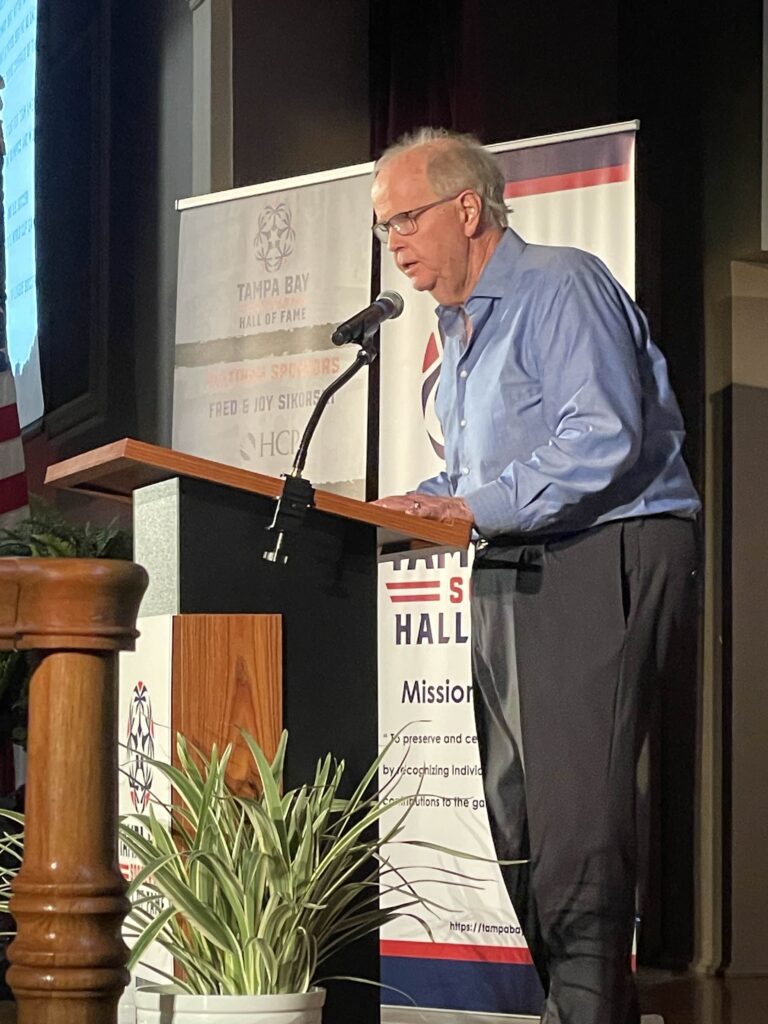
The evening also celebrated collective achievements that defined Tampa Bay soccer. The 1975 NASL Champion Tampa Bay Rowdies, honored as the Team of Distinction on their championship’s 50th anniversary, launched professional soccer in the region and created a template for expansion team success that resonates throughout American sports. Their impact transcended trophies as they introduced a global sport to a regional audience and sparked a movement that continues today.
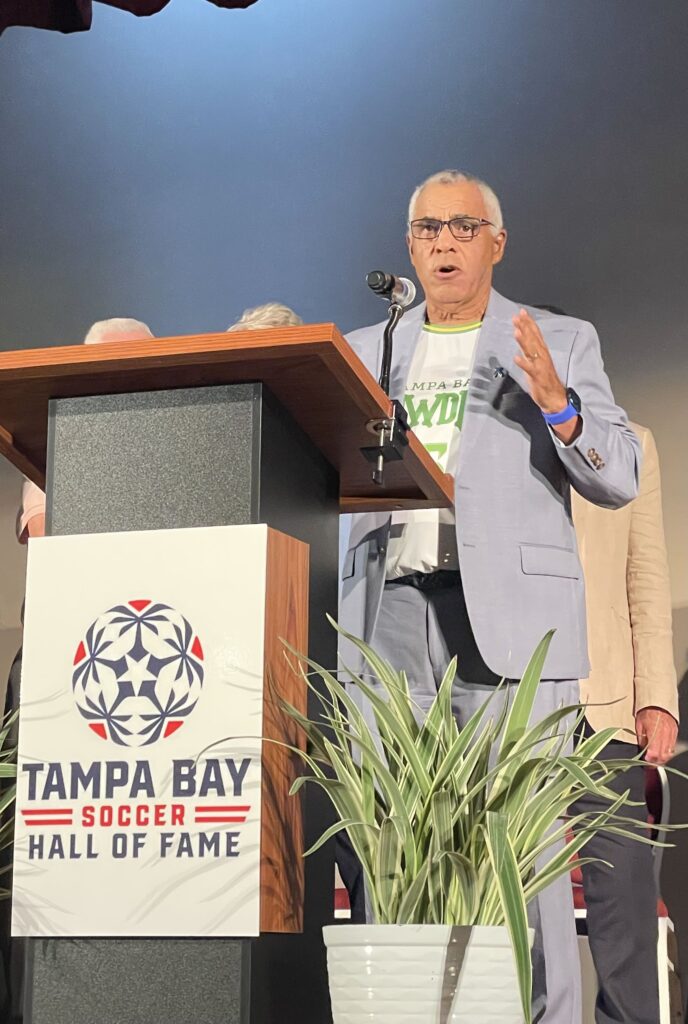
Special recognition went to the first-ever Women’s professional club Tampa Bay Sun FC, inaugural champions of the USL Super League, proving that the region’s ability to win inaugural soccer trophies spans generations. Their inspirational triumph demonstrates that Tampa Bay remains a center of American soccer achievement, while also pioneering Women’s access to the top level of the sport.
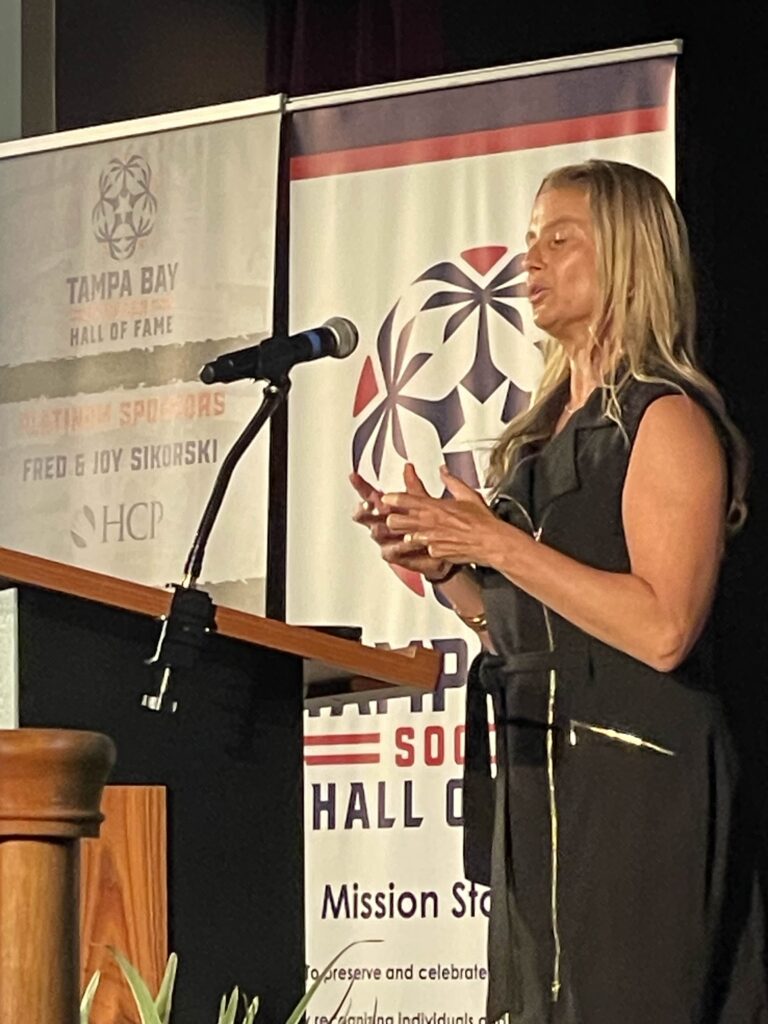
Perhaps no single moment better captured the evening’s spirit than the recognition of Lizzie Burda with the Passion Award. When the expansion Rowdies needed someone to lead their fan club in 1975, they found their perfect ambassador in the irrepressible Burda, who transformed Tampa Stadium into America’s most vibrant soccer theater.
Armed with her trademark tamborine, she helped to create an experience. Her legendary birthday celebration, when the entire stadium serenaded her with “Happy Birthday” as she stood in the center circle, is the pinnacle of fan engagement that showed her bond with the club. She proved that passion could be just as important as skill in building a soccer culture.

Throughout the evening, the recurring theme was connection. Former teammates reuniting after decades, current players meeting their heroes, and stories bridging multiple generations of soccer excellence.
As accents from around the world filled the room with laughter and memories, a truth became clear: Tampa Bay adopted soccer with talent from around the world, made soccer its own, and created a unique blend of international expertise and American ambition that continues to define the beautiful game in Florida and beyond.


